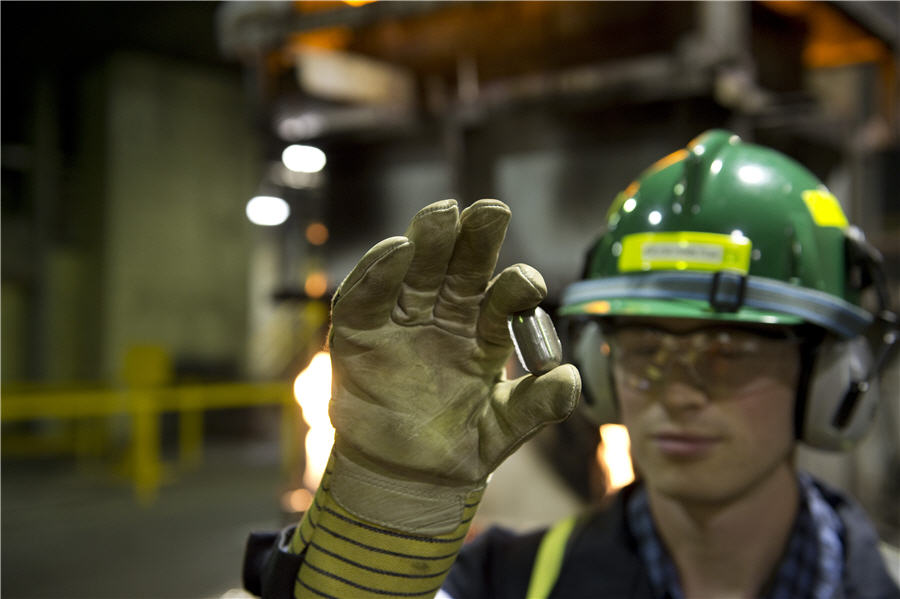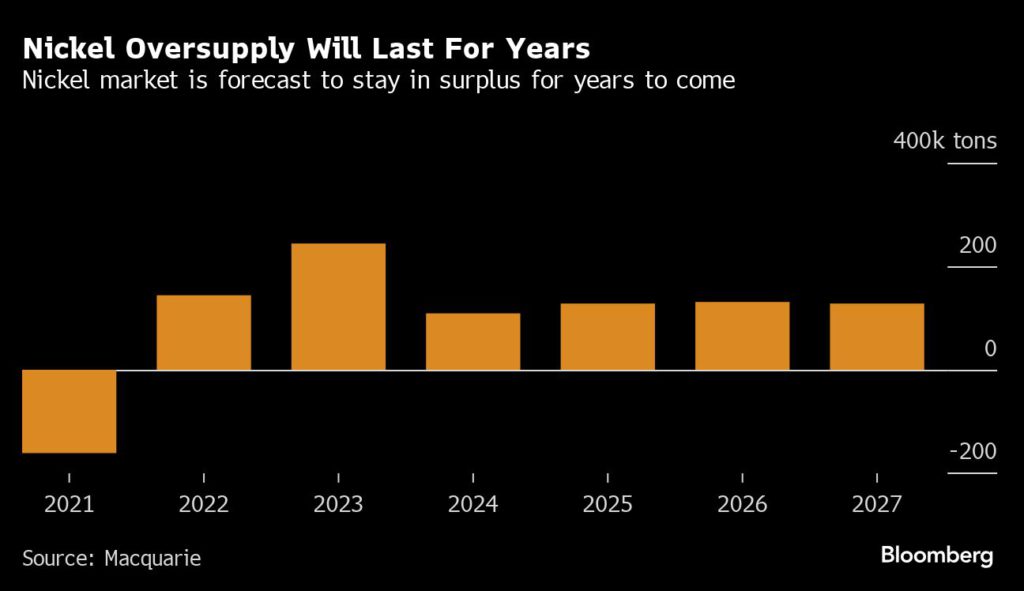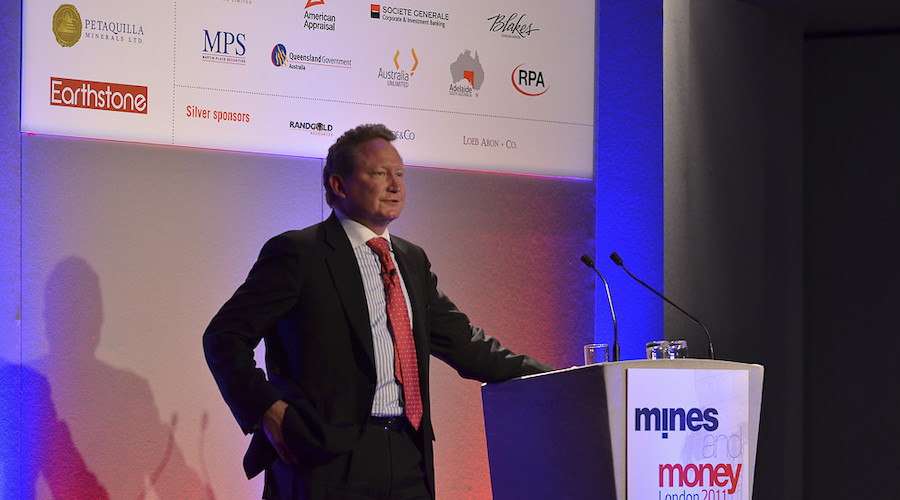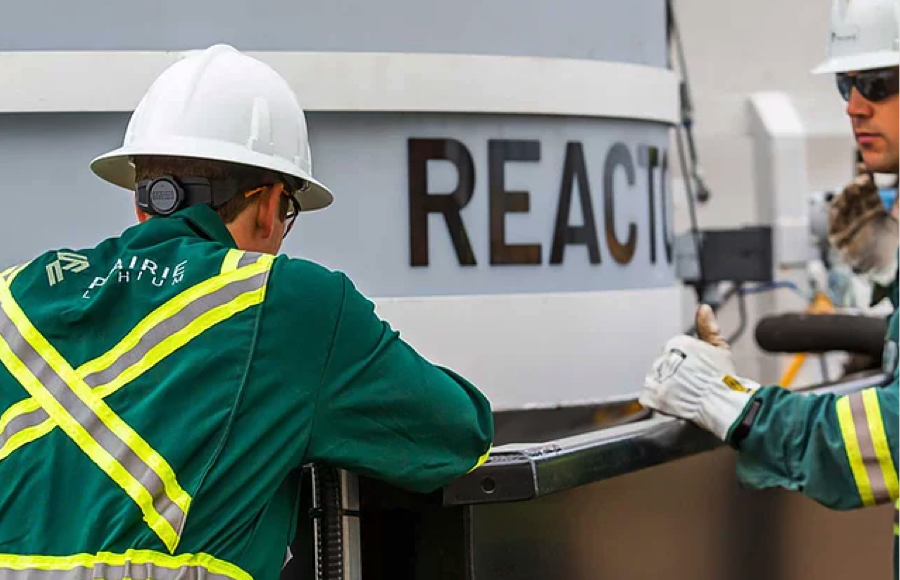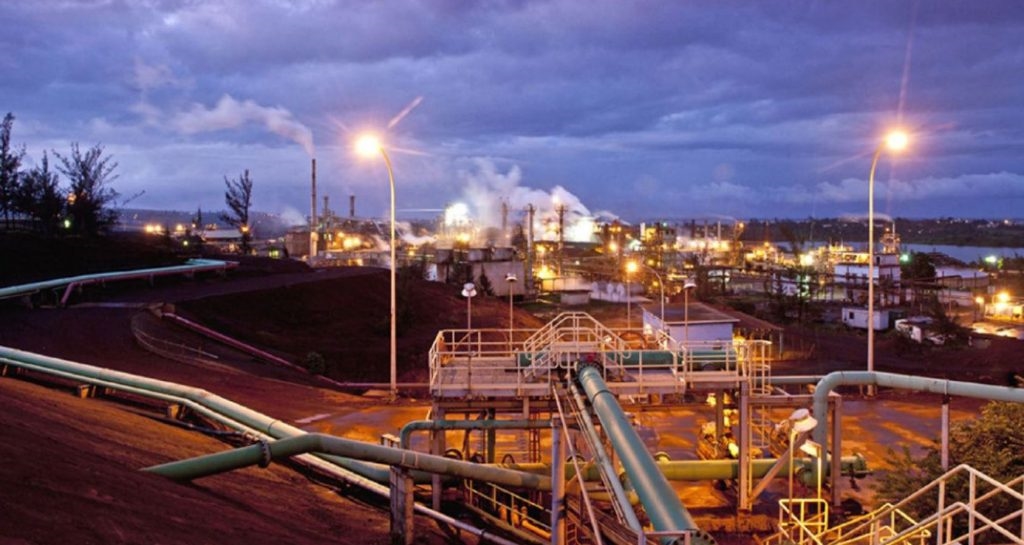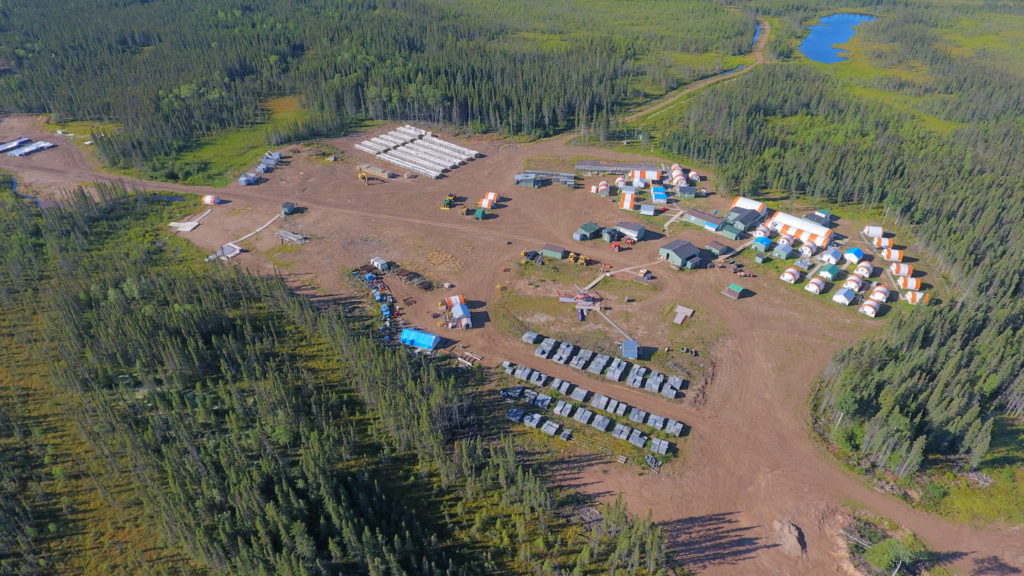 Once upon a time the Alberta Government created a Venture Capital fund called Vencap Equities Ltd. It ran for just over a decade between 1982 and 1995.
Once upon a time the Alberta Government created a Venture Capital fund called Vencap Equities Ltd. It ran for just over a decade between 1982 and 1995.
And contrary to the myth that the fund was mismanaged that was not so, it simply was bad times in the market. Despite that it was highly successful and became Western Canada's largest venture capital fund. However the myth that it was a failure was perpetuated by the Alberta Government.
In terms of publicly-funded venture capital funds, Alberta’s experience has not been positive. Vencap was established by the Alberta government with funding of $240 million and the objective of investing in venture capital. Vencap experienced many of the same problems as LSVCCs – a lack of good investments and a reluctance to take risks. As a result, a relatively small percentage of Vencap’s equity ended up in new Alberta ventures. The Alberta Opportunity Company faced similar problems in operating a program to support investments in start-up knowledge-based industries.
As late as 2005, Dr. Allan Warrick of the University of Alberta continued to promote this myth that Vencap was a failure.
A small venture capital (Vencap) company was formed, with limited success.
Vencap Equities invested not just in Alberta but in High Tech and bio-tech in Canada and the U.S.
Vencap Equities Alberta Ltd.
10180-101st St., Ste. 1980
Edmonton, AB, Canada T5J 3S4
(403)420-1171
Fax: (403)429-2541
Preferred Investment Size: $1,000,000 minimum. Investment Types: Start-up, first and second stage, control-block purchases, leveraged buyout, and mezzanine. Industry Preferences: Diversified. Geographic Preferences: Northwest, Rocky Mountain region, and Western Canada.
It often simply acted as an investor in a new project, back stopping a bigger corporate player in diversifying secondary and tertiary production, a long term goal of the Lougheed Government. At Fort Saskatchewan near Edmonton, Dow
Chemical Canada Inc. extracted salt brines for the
manufacture of chloralkali and, at Lindberg, The
Canadian Salt Company Limited produced fine
vacuum pan salt. Near Bruderheim, two companies,
CXY Chemicals Canada Ltd. Partnership and
Albchem Industries, operated solution mines to produce
sodium chlorate used mostly for pulp bleaching
in the prairie provinces and western Canada. CXY
Chemicals Canada Ltd. Partnership (formerly known
as Canadian Oxy Ltd.) is planning a 30% expansion
of its chlorate production facility to be completed by
mid-1996. This increase will be achieved by increasing
the capacity of the equipment.
Albchem Industries was created by Sherritt Gordon and Vencap. CXY is the Canadian branch of Occidental Petroleum. Armand Hammer's company which VP Al Gore and his family has a long history with.
Vencap had more than a passing interest in the construction industry in Alberta during the first boom. Donald A. Carlson ,who owns Carlson Construction, was Chairman of the Vencap Board. Former Premier Peter Lougheed joined the Board of Carlson Construction after he retired.
At the same time the Alberta government was passing legislation to create non-union merit shops in Construction in order to bust the Building Trades Unions, Vencap had shares in the Construction industry.
Stuart Olson Construction Ltd., according to their solicitor, originally was engaged in employing union members on union jobsites. The last three years, however, Stuart Olson Construction Ltd. divested itself of employees covered under Certificate Nos. 21-75, 89-82 and 114-84.
The Company currently employs no employees at the present time.
The two major shareholders of Stuart Olson Construction Ltd. are Allen S. Olson who owns 99% and Vencap Equities who owns 1% of the Company. Counsel for the Employer states that the Employer currently holds property and assets which include buildings and equipment. In effect, Stuart Olson Construction Ltd. has become a holding company.
Vencap acted as a key investment that would allow Stuart Olson to go private, and claim to be go between, allowing it to contract out to non-union labour. Thus the nineties begin with the smashing of the construction trades unions to be followed with the smashing of the public sector unions. By then Vencap was sold.
Within Alberta, the provincial government moved away from becoming directly involved in the marketplace the early 1990’s and withdrew its direct financial involvement in the development of emerging industry sectors and specific firms. Venture capital functions carried by the Alberta Opportunity Company were withdrawn; the assets of VenCap were sold. A policy of no direct loans or loan guarantees to specific businesses was adopted by Alberta.
Yet it still made money.Despite the governments Big Lie that it was a failure. In fact as Dr. Michael Percy, Dean of the U of A Business School, points out they were one of several crucial pools of capital that helped build Alberta's secondary and tertiary businesses such as the embryonic Hi-Tech and Bio-Tech industry here. Which relies on a trilateral integration between Universities, corporations and the government to this day.
Performance of High-Technology Firms in a Peripheral Resource-Based Economy: Alberta, Canada
A young high-technology base is reflected further in the small size of the labor force although three out of four firms created jobs between 1980 and 1984. Marketing was a key area of performance identified by respondent firms as companies attempted to diversify away from local markets. Overall, the systematic policies of support by the Alberta government were found to assist the growth of the high-tech industry.
The AgBiotech Bulletin Volume 2 Issue 1 January/February 1994
Biostar Raises $10.9M
Biostar Inc., a Saskatchewan company which specializes in the
development of animal and human vaccines, has raised $10.9
million in equity. The funds were assembled through a syndicate
led by MDS Health Ventures of Toronto.
The investment will be used to establish an advanced product and
manufacturing facility in Saskatoon and to finance new product
development. Once the plant is in operation in 1994, Biostar
will be able to produce genetically engineered health products
and components for global markets.
The company markets three vaccines through its wholly owned
subsidiary Biowest Inc. The new plant will allow the company to
double its production levels. Current sales are valued at
$500,000. Steve Acres, Biostar president, anticipates that
within the next five to six years sales will reach $20 million.
Dr. Murray McLaughlin said that the equity investment in Biostar
was an affirmation of the strength of the Saskatoon agbiotech
community. "Biostar received the first funding assistance ever
provided by Ag-West. Our investment of just over $800,000 in
1989 has helped facilitate a major Canadian venture. The Ag-West
board is extremely gratified by the performance of Biostar in a
highly competitive market." It is Ag-West's role to fill the gap
between the research phase of development and commercialization.
The recent $10.9 million investment comes from MDS Health
Ventures, Health Care and Biotechnology Venture Fund, the
Saskatchewan Government Growth Fund, the International Centre for
Agriculture Science and Technology (ICAST), Working Ventures
Canadian Fund, Vencap Equities Alberta, Federal Business
Development Bank (FBDB) and CIC Industrial Interests.
For further information contact Steve Acres (306) 966-7473.
NeuroMotion Case Study
Tom Rice, acting CEO of NeuroMotion Inc., was anticipating a problem. He had
heard that NeuroMotion, a new medical device company, might receive only half
of the $6 million financing it had planned for. He called Business Manager Tricia
Cisakowski and Chief Financial Officer Christine Stacey into his office to help
develop a new strategy to deal with this potential setback.
Assuming full financing of $6 million, their strategy for penetrating the market
was an aggressive plan involving the commercialization of all of NeuroMotion’s
products in rapid succession. The products were the Glove, the WalkAid, and
the Tremor Control Cuff. Decreasing risk was a key strategy in the formation of
NeuroMotion. Increasing the number of product offerings increased the
probability that the company would generate significant sales, which made it a
more attractive investment opportunity.
Tom Rice, Ph.D. A business professional with over 24 years experience as an
executive, consultant, investor and researcher in the medical products industry.
He also has considerable experience as a consultant for start-up companies.
Rice brought substantial venture capital contacts to NeuroMotion through his
involvement in Vencap, a venture capital fund. He was employed as a part-time
CEO for approximately three, then became full time. He was a de facto MDS
appointee, who had verbally agreed to a three month contract with NeuroMotion.
He operates out of Edmonton and Minneapolis-St. Paul.
And then Klein got elected and since his government was not in the business of business, that is of making money, Vencap was caught up in the privatization frenzy of the nineties. Klein tossed the baby out with bathwater and sold it.
It was then gulped up by Charles Schwartz's private equity investment firm; Onex Corporation. Talk about a nice chunk of change.
Onex also purchased Vencap Equities Alberta, Ltd., a promising venture capital fund located in western Canada.
The Onex Corporation of Toronto said yesterday that it planned to acquire Vencap Equities Alberta Inc. for $256 million (Canadian), or $187 million (United States), including the payment of $144 million (Canadian) in Vencap debt. Onex said it would buy all the shares of Vencap -- including the 30.5 percent stake in stock options the Alberta government holds -- for $8.50 (Canadian) a share. Onex, which owns interests in airline catering, food-distribution and delivery businesses, will also pay off Vencap's outstanding loan to the Alberta government. Vencap's stock reached a record high of $8.125 before closing at $7.875, up 37.5 cents, in trading on the Alberta Stock Exchange. Onex's stock was up 12.5 cents, to $14.125, in Toronto.
Vencap was sold off at fire sale prices, just like the provinces Liquor Stores were, benefiting its corporate board and not taxpayers. The supposed debt of Vencap was actually what it had invested in the market. In other words capital awaiting interest. Otherwise Onex would not have been interested.
Klein was on the band wagon that the province was in debt. So a valuable investment instrument was seen as being in debt, which it wasn't it just had outstanding investments in the market, so it was sold.
The Province of Alberta (the "Province") has made it known both to Vencap Equities Alberta Ltd. ("Vencap") and publicly that it wishes to dispose of its interests in Vencap. Those interests (the "Alberta Investment") consist of a loan in outstanding principal amount of $199,988,000.00, one (1) special share and an option to acquire up to an additional 3,999,999 special shares at a price of $1.00 per share.
In order to effectively market the Alberta Investment the Province requires access to certain information from Vencap which has not heretofore been made public.
There could be significant benefits to Vencap and its shareholders in having the Province's loan paid out or purchased either by Vencap or some other party and in having the Province's special share and option dealt with at the same time.
Vencap would likely want the repeal of the Vencap Equities Alberta Act as part of any resolution of the Alberta Investment.
Thus there are significant material benefits to be gained by both parties through Vencap and the Province cooperating in the resolution of these issues.
Those that sat on its board brag today about its success before it was gutted by the Klein revolution. Former Vencap director Derek Mather notes one of his achievements as;
Helped to create a new Western based venture capital Company, the largest fund of its kind in Canada and, together with a team of professional executives built a portfolio of venture investments worth over $100 million.
And another board member, Peter van der Velden, notes in his corporate CV that Vencap Equities Alberta Ltd, was; arguably one of Canada's most successful venture capital firmsThis is from the SEC report on the take over of Vencap by Onex in 1995.
Vencap
Vencap is an Alberta, Canada corporation. Vencap is a value-added
private equity investor, operating in western Canada, the Pacific Northwest and
the Rocky Mountain region of the United States. Vencap purchases significant and
influential equity interests in selected high-growth companies, builds these
companies to positions of market leadership andgenerates a return on investment
either through profitable exit or by generating ongoing sustainable income.
The address of the principal business and principal offices of Vencap is Suite 1980,
10180 101st Street N.W., Edmonton, Alberta, Canada T5J 3S4.
Information relating to the directors and executive officers of Vencap
is set forth on Schedule A hereto, which is incorporated herein by reference.
Directors and Executive Officers of
Vencap, Inc.
("Vencap") · Download Table
PRESENT PRINCIPAL
OCCUPATION OR
NAME BUSINESS ADDRESS EMPLOYMENT
---- ---------------- -----------------
Ian T. Morris Suite 1980, 10180 101st Street, N.W. Vice-President, Chief
Edmonton, Alberta, Financial Officer and
Canada T5J 3S4 Secretary
William R. McKenzie Suite 1980, 10180 101st Street, N.W. Vice-President
Edmonton, Alberta,
Canada T5J 3S4
David E. Stitt Suite 1980, 10180 101st Street, N.W. Vice-President
Edmonton, Alberta,
Canada T5J 3S4
Oleh S. Hnatiuk Suite 1980, 10180 101st Street, N.W. Vice-President
Edmonton, Alberta,
Canada T5J 3S4
Frank L. Stack Suite 1980, 10180 101st Street, N.W. Vice-President
Edmonton, Alberta,
Canada T5J 3S4
Mark Hilson 161 Bay Street Director, Vice-
P.O. Box 700 President of Onex
Toronto, Ontario, Corporation
Canada M5J 2S1
Anthony Munk 161 Bay Street Director, Vice-
P.O. Box 700 President of Onex
Toronto, Ontario, Corporation
Canada M5J 2S1
Donald Carlson Carlson Development Corp. Director
Suite 1420, 9915 108th Street
Edmonton, Alberta,
Canada T5K 2G8
Vahan Koloian Polar Capital Corp. Director,
13th Floor President and Partner
350 Bay Street of Polar Capital Corporation,
Toronto, Ontario a merchant banking firm
Canada M5H 2S6
Onex
Onex is an Ontario, Canada corporation. It is a diversified company
that operates through autonomous subsidiaries, associated companies and
strategic partnerships. The address of the principal business and principal
offices of Onex is 161 Bay Street, P.O. Box 700, Toronto, Ontario, CANADA M5J
2S1.
Information relating to the directors and executive officers of Onex is set
forth on Schedule B hereto which is incorporated herein by reference. Onex is
the sole shareholder of Vencap Acquisition Holdings Inc. ("Vencap Holdings").
Vencap Holdings is an Ontario, Canada corporation which was formed to acquire
and hold the outstanding securities of Vencap and was one of the parties that
filed the Schedule 13D to which this amendment relates. Subsequently, Vencap
Holdings transferred the shares it owned in Vencap to affiliates of Onex. Onex
is the indirect beneficial owner of approximately 90% of the shares of Vencap.
The TSX lists the following as being on the Vencap Board of Directors.
But lo and behold if Albertans are still paying for it. Despite selling Vencap off at fire sale prices the Alberta government holds loans made to Vencap,thirty years later, from the Heritage Trust Fund, which appear in the 2007 provincial budget on page 62 under Loans and Advances.
December 2000: All of the loans made to provinces from 1977 to 1982 have been paid back on time and without any missed payments. The only project loans left on the Heritage Fund books are Vencap and Ridley Grain Ltd. for a total of $98.8 million, which represents 0.8% percent of the Heritage Fund's total portfolio.
Apparently despite the sale of Vencap and all its assets at a profit it is still on the government's books as an outstanding loan for a measly $2 million dollars, pennies really, which was never paid back. Which is curious if you consider that Onex took on all of Vencaps debt. Why is this still on the books?
Perhaps its because the directors who profited from the sale of Vencap did not owe us, the taxpayer investors, any fiduciary responsibility. After all they were pals of the government and insiders all. An embarrassment of riches were gotten except by the people of Alberta.
Fiduciary Duties to Shareholders
Tongue v. Vencap Equities Alberta Ltd. (1994) AB
Similar facts to Source Data, but Alberta takes different approach.
A secretly offers to buy out V shares on the condition that V buys out T first. T would have been able to command a higher price if he had known about negotiations with A. T signs waiver of claims to future profits from the re-sale of the shares. V director sells shares to A at 3x the price.
· Court finds that T did not sign the waiver being fully informed. V should have disclosed the negotiations with A.
· There was a close relationship between the shareholders.
· As a result there was a duty to disclose the negotiations with A.
· V is forced to disgorge profits
· This is the opposite finding of the Ontario position in Source Data, hence the law is unsettled in Canada.
On the other hand, fiduciary duties have been developed by the courts. It is true that Canadian corporate law statutes and the Civil Code of Québec have generally codified fiduciary and care duties but this codification does not appear to have affected or been intended to affect their development. If Canadian courts expand the category of persons to whom directors owe fiduciary duties (as other common law jurisdictions have done), they are presumably responding to a concern about corporate governance of corporations.
Canadian authorities, following the New Zealand decision Coleman v. Myers, [1977] 2 N.Z.L.R. 225 (C.A.), have already suggested that the directors may owe parallel fiduciary duties to shareholders in some circumstances: see Tongue v. Vencap Equities Alberta Ltd (1994), 14 B.L.R. (2d) 50 (Alta. Q.B.). In Tongue, at page 85, the Court held: "There is no general fiduciary duty that arises between a director and shareholders simply because of that relationship: something more must be present before a fiduciary duty arises."
Onex is around today thanks to Alberta taxpayers while the original Vencap board members have been sitting pretty ever since. The whole Vencap debacle smells funny.

So lets look at how Vencaps Directors did out of the deal. Vencap benefited the Directors whose fiduciary interest was to themselves and not the taxpayers. An example of the benefits of Vencap management being an integrated board of Directors.
As we shall see.
BANYAN CAPITAL PARTNERS is an institutionally funded growth capital firm headquartered in Vancouver, B.C., with offices in Calgary and Seattle. We invest in or buy well-managed, successful middle-market companies located primarily in western Canada and the northwestern United States.
Banyan, through its two funds, has $140 million in committed capital under management. Our investor base includes two of Canada's largest pension funds, one of the largest financial institutions in the United States, a multi-billion dollar Japanese trading company and Connor, Clark & Lunn Financial Group, Canada's fourth largest independent money management firm.
David Stitt
Managing Director
David joined Banyan at its inception in 1999. Prior to Banyan, he spent 13 years at Vencap, Inc. and its predecessor, Vencap Equities Alberta Ltd., then western Canada's largest investment company which invested approximately $300 million in 84 company , as Vice President. He has been a director of Coinstar since 1995.
Frank Stack
Managing Director
Frank joined Banyan in November of 2001. Prior to joining Banyan, he spent three years with privately owned Vencap, Inc., where he played a lead role in maximizing the value of a portfolio of 34 companies. The wind-up of Vencap, Inc. led to shareholders receiving $154 million on an investment of $25 million. Prior to Vencap, Inc. Frank spent two years with publicly owned Vencap Equities Alberta Ltd. where he led or co-led investments in four companies in the consumer products and technology sectors which generated a 29% return ($21 million). Prior to Vencap, Frank was a director with the merchant banking group of US-based GATX Capital Corporation and spent a number of years with the investment banking groups of Salomon Brothers, Inc. and Citibank N.A. Frank has a B.Comm. from the University of Alberta and an MBA from Wharton. He is a past director of eight private and public companies and is currently a director of Q'Max Solutions Inc.
R.A. (Sandy) Slator who was another insider was the CFO and then CEO of Vencap. And has done well for himself since it was sold. PWA was the Alberta Airline that was part of Lougheed's diversification plan. The Tories created PWA to expand air operations to the North for the Tar Sands. PWA bought up smaller airlines, and the government sweetened the deals such as with Time Air, by expanding municipal airports for PWA planes.
Sandy Slator graduated as a Chartered Accountant in 1970 articling with the firm of Clarkson Gordon & Co. (now Ernst & Young) in Winnipeg, Manitoba. In 1973, Sandy joined Byers Transport Limited, a large western Canadian based truck transportation company, as Chief Financial Officer and 18 months later, led a management buy out of the Company from the then owner, Pacific Western Airlines. He assumed the role of President and Chief Executive Officer on the successful takeover, and in 1979 he sold the Company to Laidlaw Inc. Sandy remained as President and CEO until May 1982. In 1983 Sandy joined Vencap Equities as its second employee and as Chief Financial Officer. He became President and Chief Executive Officer of Vencap in 1989 and served in that role until Vencap's sale to Onex Corporation in 1996. As a venture capitalist, Sandy also served a three-year term as President of the Canadian Venture Capital Association. After a few years of retirement and golf, Sandy joined PTI Group Inc. as President and Chief Executive Officer in January of 2000. Sandy led the merger of PTI Group Inc. with three other U.S. based companies, with the combined group going public on the New York Stock Exchange in February of 2001, under the name of Oil States International Inc. Since then he has been Vice President of Well Site Services, PTI Group Inc. is North America's leading integrated supplier of lodging and food services to remote locations. PTI serves 35,000 meals and houses 11,000 people per day at its remote site locations throughout the world. Sandy has served on numerous corporate boards and is very involved in community related activities. He currently serves as Vice-Chair of the Edmonton Space and Science Centre Foundation, and was Chairman of the Centre's recently completed $14 million fund raising campaign.
He was on the Steering Committee for The Alberta Deal Generator and its joint venture partner organizations (TEC Edmonton and Calgary Technologies Inc.)
A major player in bio-technology in Canada is another former member of the Vencap board.
Robert B. Church, PhD, BSc, MSc – Professor Emeritus, Faculty of Medicine, University of Calgary
Robert B. Church is President of Church Livestock Consultants Ltd. and Professor Emeritus of the Faculty of Medicine of the University of Calgary. He is a past President of the Calgary Exhibition and Stampede and has served on the Board of Directors of several companies, including Connaught Laboratories Ltd., Vencap Equities Ltd., Biostar Inc. and Ciba-Geigy Ltd. He is currently on the Board of AVAC Ltd., CV Technologies Inc., and is the founding Chairman of the Board of the Alberta Science and Research Authority and is currently Chairman Emeritus. Dr. Church was a founding member of the Natural Sciences and Engineering Research Council of Canada and of the Canadian Institute for Advanced Research and has been a member of the Board of the Medical Research Council of Canada and of the Alberta Research Council. He has been a founder and/or advisor of a number of start-up high technology companies, including Alberta Livestock Transplants Ltd. (1971) through to GangaGen Inc. (2004), as well as a member of the Investment Committees of the Boards of Vencap Equities Ltd. and AVAC Ltd. Through his numerous activities, Dr. Church has over thirty years experience representing investments in high technology start-up companies of well over $50 million. In 2000, Dr. Church was appointed to the Order of Canada, this country’s highest honour for lifetime achievement.
And speaking of old boy clubs AVAC is one. Dr. Church and Sandy Slator sit on its board.
AVAC is truly a made in Alberta innovation…a unique private, not-for-profit company that invests in research initiatives and early stage commercial businesses that expand Alberta's value-added industry, with a particular focus on the agrivalue™, renewable resource, ICT, life sciences and other industrial technology sectors.
Ever the player in high tech and high finance Dr.Church was appointed to the board of Trustees of the joint provincial federal National Institute for Nanotechnology at its inception in 2005. And he sits on the Ontario Biotechnology Commercialization Centre Fund Advisory Committee.
In sum, the biotech industry has formidable and effective representation
within the traditional lobby sector. Yet, while these groups have
had great success in controlling government, they are less capable of
reaching the public. For this task, they have developed an intricate web
of hybrid lobby groups.
One of the most influential hybrid groups has been the National
Biotechnology Advisory Committee (NBAC), which was established as
part of the first National Biotechnology Strategy to bring business leaders
and scientists involved or interested in biotech into the federal policy-
making process. NBAC consisted mainly of industry representatives
or scientists from public institutions with personal commercial interests
in biotech. Twelve of the 19 members of the 1998 NBAC were from
industry and the consistency of NBAC over the years is striking. Seven
members of the 1998 NBAC were NBAC members prior to 1992.
It put forward the idea of a Canadian Biotechnology Advisory Council,
which would manage a “National Conversation” whose central goal
would be “the development of a socio-ethical framework for public policy
decision-making.”194 That year, as part of the Canadian
Biotechnology Strategy, the government morphed NBAC into the
Canadian Biotechnology Advisory Committee, with an expanded range
of members — maintaining the biotech community’s dominance but
decreasing the number of representatives directly from industry. CBAC
is administered by the Canadian Biotechnology Secretariat within
Industry Canada. Whereas each NBAC was convened by the government
at key times to develop biotech industrial strategies, the CBAC
facilitates an already established strategy. It reports to the
Biotechnology Ministers Co-ordinating Committee, advising them on
how to deal effectively with sensitive issues, and, at the same time,
engages with the public to provide the semblance of consultation.
Industry’s influence over CBAC is more indirect, yet still significant. The
linkages are there but more removed. For instance, the CBAC website’s
biography of its chair, Alan Naimark, lists his academic positions, but
does not mention that he’s a member of the Board of Directors of the
Winnipeg-based biopharmaceutical company Medicure Inc.195
Naimark’s also been on the Board of Directors of the Canadian
Imperial Bank of Commerce (CIBC) since 1987 and owns, controls or
directs 4,174 shares in the company.196 CIBC is a leading investor in
biotechnology in Canada and its World Markets venture capital fund
for biotechnology and pharmaceuticals has “one of the broadest and
deepest of any financial institution, with current coverage of over 45
biotechnology companies and 35 specialty pharmaceutical
companies.”197 Similarly, the biography of CBAC member Robert
Church that is available on the web site provides a comprehensive listing
of his awards and service to academia and government, but does
not mention that he has served on the Board of Directors of several
biotech companies, including Connaught, Biostar, and Ciba Geigy, or
that he is the founder/advisor to “a number of start-up high technology
companies, including Alberta Livestock Transplants Ltd. (1971) through
to Neurospheres Ltd. (1990), as well as a member of the Investment
Committees of the Boards of Vencap Equities Ltd. and AVAC Ltd.” His
biography on another web site, that of the Board of Directors of the
Canadian Science and Technology Growth Fund, claims: “Through his
numerous activites, Dr. Church has over sixteen years experience representing
investments in high technology start-up companies of well over
$50 million.”198
Another company that is a who's who of Alberta politicians including Jim Dinning, former Calgary Mayor Al Duer and former MP Jim Gouk is Rocky Mountain Vacations. Whose CEO is a former Vencap board member.
Michael Phillips is retired as Senior Vice-President, Investments of GrowthWorks Capital Ltd., which manages the Working Opportunity Fund in British Columbia, Canada. The Working Opportunity Fund is a uniquely Canadian form of financial institution dedicated to providing risk capital to a wide range of entrepreneurial business in B.C. Prior to joining GrowthWorks Capital Ltd., Mr. Phillips spent over twenty years with financial and venture capital businesses such as Vencap Equities Alberta Ltd. and Business Development Bank.
Mr. Phillips is currently a director on the boards of nine Canadian companies including Armstrong Group (owners and operators of Rocky Mountaineer Vacations) where he has served as a director since 1991 and as Chairman since 1998.
Mr. Phillips resides in Vancouver, Canada.
It was Jim Dinning, as Treasurer of Alberta, under Ralph Klein, who put Vencap up for sale. He and other insiders and former politicians have benefited ever since. Because when the Ralph Revolution of privatization and contracting out began it was too benefit insiders as well as pals of the government.
Here are a few more of the successful Directors who were on the Vencap Board. Based on their insider knowledge from Vencap they have gone on to profit in the area of venture capital investments in bio-tech, high tech, oil field supplies and support services, all the things Vencap was invested in.
Elson McDougald, Director
Mr. McDougald is the Chairman, President, Chief Executive Officer and a Director of Western Lakota Energy Services Inc. He founded Laredo Drilling Ltd. and was the Chief Executive Officer and a director of Tetonka Drilling Inc. Mr. McDougald has been a director of Alberta Treasury Branches and Vencap Equities Alberta Ltd. He is currently a member of the board of directors of Phoenix Technology Services Inc. and its Income Trust; Phoenix Technology Income Fund ("Phoenix"), CCR Technologies Ltd. ,and Decision Dynamics Technology Ltd.
Derek assisted in organizing the first AceTech Symposium in 1993 and, shortly thereafter, was appointed AceTech's Executive Director, a post he held until his retirement from the AceTech management group in 1999."
A graduate in Business from McGill University in 1954, Derek's career has included several years with the Investment Department of the Sun Life Assurance Co. of Canada in Montreal and London, England, followed by a career in venture capital, first with Canadian Enterprise Development Corp.(CED), which he helped to create, and then as founding President and CEO of Vencap Equities Alberta Ltd. in Edmonton.
While with CED, Derek was appointed President and CEO of a troubled investment, Westmills Carpets Ltd. of Calgary, which he assisted to return to profitable operations."
Derek is currently a Principal of the Osborne Group, Canada's leading firm of interim executives. As well he serves Science World of BC as a member of its Equity Committee and is a Partner of BC Technology Social Venture Partners. In 2002 he was appointed a director of CityXpress Corp.
Derek enjoys working with the managements of rapidly growing technology companies where his skills and experience can add value.
Peter van der Velden, B.Sc., M.Sc., M.B.A.,
is the President and CEO of MDS Capital. Throughout his career Peter has sought to leverage his entrepreneurial drive, academic background, and business experiences to help talented entrepreneurs build outstanding businesses. He started in the venture capital industry in 1988 with Vencap Equities Alberta Ltd, and from there took on the role of Vice President, Business Development at a venture capital backed drug delivery development company where he led their international licensing initiatives, established their subsidiary operations in Australian was instrumental in raising more that $70 million in private and public equity, as the company evolved to become a TSE 300 listed company. His experience also includes, four years as a partner at a Canadian merchant bank, a short time as a partner at a public equity investment bank, and four years as the founding partner of a leading Canadian private equity investment bank.
Peter holds B.Sc. honours and M.Sc. (Pathology) degrees from the Queen's University at Kingston, and an M.B.A. in finance and policy from the Schulich School of Business.
Oleh Hnatiuk
CCR Technologies Ltd. (TSX: CRL), a technology solutions company focused on the purification of process chemicals and sweetening of sour gas, has appointed Oleh Hnatiuk as its new President & CEO. Hnatiuk was formerly President & CEO of University Technologies International Inc. (The University of Calgary technology transfer agency) and Senior Vice President, Vencap Equities Alberta Ltd. www.reclaim.com
Graeme R. Percy, CD, P.Eng., General Manager & COO World Oil Tools
World Oil Tools Inc. is a Canadian based manufacturer and supplier of high technology inflatable products to the oil and gas sector.
In 1984 a move from Oakville, Ontario to Edmonton, Alberta and a
new job at Vencap Equities Alberta, Ltd. took place recently
for Graeme R. Percy, BASc’69 (MEng, McGill)
Dr. William A. Cochrane OC, MD, FRCPC, FACP, DABP, D.Sc. (hon), LLD (hon)
During his career, Dr. Cochrane has shared his leadership with a range of organizations, from the National Biotechnology Advisory Committee, the Alberta Research Council, the Alberta Economic Development Authority and the Alberta Science and Research Authority, to private sector ventures such as Vencap Equities Alberta, Oncolytics Biotech, Q.S.V. Biologics and Resverlogix Biotech Inc. His extensive contributions to the non-profit sector include service to the Ronald McDonald Children's Charities Foundation, the Canada/China Child Health Foundation, the Calgary Rotary Club and the Banff Centre.
Vasogen Inc.
William A. Cochrane +, OC, MD Chairman of the Board February 1995
Calgary, Alberta and a Director of the Company and Healthcare Consultant
Dr. Cochrane acted as Chairman of Vasogen's Board of Directors from 1995
until March 2001. He also serves on the boards of Andre Wines, Fox Energy Corp.,
Medicure Inc., Nucleus Bioscience, Pheromone Sciences Corp., and StressGen
Biotech. For ten years, Dr. Cochrane served as Chairman and Chief Executive
Officer of Connaught Laboratories and was a senior advisor to Vencap Equities
Alberta. He is a past-Chairman of the National Biotechnology Advisory Committee
and was the first Dean of Medicine of the University of Calgary Medical School.
His academic career culminated in his appointment as President and
Vice-Chancellor of the University of Calgary. He has served as Deputy Minister
of Health Services with the Government of Alberta and is currently an
international investment consultant in the area of health products and services.
And when David Stitt and Derek Mather met via Vencap.
Stitt was '
Vice President of Sales and Marketing for Westmills Carpet Ltd., a regional carpet manufacturer located in western Canada.' The carpet manufacturer that was going under that fellow Vencap Director Derek Mather rescued through his private equity company. Vencap was the largest pool of capital in Western Canada, comparable to OMERS and the the Teachers Pension Fund in Ontario and the Labour Fund; Solidarity in Quebec. It was investing in bio-tech and high tech, as well as well head service operations, and it made money. After the sale those who sat on its board benefited by investing in exactly these same sectors. The Klein government panicked and sold the golden goose for the price of the egg.
A decade later after selling Vencap, the Alberta government is looking at creating a pool of capital from Public Sector Pension Funds under its control merged with the Heritage Trust Fund, to be called AIM, for the purposes of generating venture capital.
At March 31, 2007, Alberta had about $45 billion in financial assets that are
invested in short-term, medium-term and long-term investments. The
investment strategies for these assets depend on the objectives of the funds.
In 2007-08, the new Alberta Investment Management Corporation will be
established to manage about $40 billion of these assets along with about
$30 billion in assets of public sector pensions and the Workers'
Compensation Board.
In 2007-08, investment income is estimated to be $2.5 billion (excludes
public sector pensions and Workers' Compensation Board). This is a
decrease of $601 million, or 19.4%, from 2006-07, primarily due to lower
expected returns of the Heritage Fund and other endowment funds. In 2006,
investments in the Heritage Fund and endowments benefited from strong
equity markets. Over the next three years, it is expected that the growth in
equity markets will be closer to historic levels.
Wait a minute isn't that Vencap all over again? Jamais Vu!
A government-funded investment pool would provide critically needed financial backing to emerging enterprises and commercializing technology in Calgary and Alberta -- which suffer from an energy-centric investment community -- according to a report obtained by the Herald.
"There's an opportunity to leverage a government position in an equity capital market into a broader opportunity for growth of Alberta-based companies," said Calgary Economic Development director of research Adam Legge, who prepared the report, which will be issued later this week. "We have a real opportunity for Calgary to become Canada's centre of capital."
The 70-page report recommends the province examine the benefits of a so-called fund of funds -- government money injected into a range of venture investment funds -- to provide venture capital for companies and technology outside of oil and gas that may have difficulty attracting investors.
Masters noted that Alberta produces about 15 per cent of Canada's GDP, but receives two to three per cent of the country's venture capital. "It's an environment where we're behind and we need to make some changes."
Under the Ralph Klein regime, the province forcefully exited the venture capital area by liquidating its interest in a venture capital fund, Vencap Equities Alberta Ltd. -- which was sold in 1995 to Onex Corp. of Toronto for more than $170 million -- and closing the venture capital arm of Alberta Opportunity Co. "There was a nuclear winter after that," said Masters.
SEE:
Find blog posts, photos, events and more off-site about:
Alberta, Heritage Trust Fund, LAPP, Alberta Investment Management Corporation, Canada, Vencap, Vencap Equities, public-private-partnerships, OMERS, CPP, Ontario-Teachers-Fund, OTF, Canada, investment, bio-tech, Venture Capital, Onex, economics,
